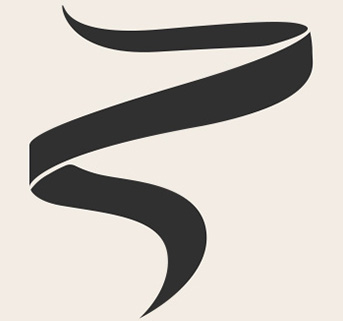Dr Shahidi, Otolaryngology, Head and Neck Surgery MED 0001167352, is an Australian-registered ENT (ear, nose and throat) surgeon whose practice includes procedures such as structured rhinoplasty and alar base reduction, where clinically appropriate. His clinical work involves the assessment and management of nasal conditions that may be functional, structural, or aesthetic in nature.
What Is Structured Rhinoplasty?
Structured rhinoplasty is a surgical approach that aims to support the nasal framework, often using cartilage grafts or other techniques, while modifying nasal contour where clinically appropriate. This technique is intended to provide structural support. Outcomes vary depending on individual anatomy, healing, and procedural factors.
Structured rhinoplasty may be performed for functional, aesthetic, or combined clinical reasons, where appropriate. It can also be undertaken alongside other procedures, which may include:
- Alar base reduction (may be consider to reduce nostril width)
- Nasal tip refinement (to adjust nasal tip contour)
- Septoplasty (may be indicated to help address nasal obstruction)
Procedure Overview
During a consultation, Dr Shahidi will conduct a clinical assessment of your nasal anatomy and review your medical history and goals. If surgery is considered appropriate, he will outline the proposed approach, which may include:
- Areas of structural adjustment
- Graft or suture techniques
- Any recommended combined procedures
If surgery is considered appropriate, it is generally performed under general anaesthesia in a hospital setting. The duration can vary and may extend over several hours, depending on the complexity of the case. All procedures carry risks, which will be discussed during your consultation.
Risks and considerations
All surgical procedures carry risks. Potential risks associated with structured rhinoplasty can include:
- Nasal asymmetry
- Infection
- Bleeding or bruising
- Changes in nasal sensation
- Scarring
- Breathing difficulties
- Possible need for revision surgery
These risks, along with potential benefits, limitations, and recovery expectations, will be discussed in detail during your pre-operative consultations. A second opinion from an appropriately qualified health practitioner is recommended before proceeding with any surgical or invasive procedure.
Click here to read the risks and considerations of surgery.
Aftercare and recovery
Post-operative care is tailored to each patient. An aftercare plan may include:
- Guidance on wound care and hygiene
- Recommendations to avoid strenuous activity for a specified period
- Elevating the head to help reduce swelling
- Use of prescribed medications as directed for comfort and healing
Visible swelling often decreases over the first few weeks, although changes to the nose may continue for 12–18 months. Follow-up appointments will be arranged to monitor healing and provide ongoing care.
Eligibility for structured rhinoplasty
Not everyone will be suitable for structured rhinoplasty. Suitability is determined after a full clinical assessment that considers overall health, medical history, and psychological readiness. Factors such as existing nasal conditions, previous nasal surgeries, and reasons for seeking the procedure will form part of the evaluation. In some cases, additional medical or psychological assessments may be required before surgery is considered.
Alar base reduction
Alar base reduction (alarplasty) is a surgical technique that may be considered to reduce the width or flare of the nostrils when clinically appropriate. It is sometimes performed alongside structured rhinoplasty, but it can also be undertaken as a standalone procedure.
Procedure details
This procedure involves removing a small, measured portion of soft tissue from the lower border of the nostrils. Incisions are usually placed within natural skin creases to help minimise visible scarring. The amount of tissue removed is tailored to the individual’s nasal structure, with consideration given to maintaining proportion and balance where clinically appropriate.
Risks and considerations
As with all surgical procedures, alar base reduction carries potential risks, which may include:
- Infection
- Asymmetry
- Scarring
- Swelling or altered sensation
- Dissatisfaction with cosmetic outcome
These risks, along with recovery expectations and any procedure-specific considerations, will be discussed in detail during your consultation. A second opinion from an appropriately qualified health practitioner is recommended before proceeding with any surgical or invasive procedure.
Click here to read the risks and considerations of surgery.
Aftercare and recovery
When performed on its own, alar base reduction generally involves a shorter recovery period, although healing times vary between individuals:
- Incision site healing – often occurs within 7–10 days.
- Scar maturation – may take several months.
- Return to non-strenuous activities – in some cases, possible after 1–2 weeks.
Patients are usually advised to avoid heavy lifting or strenuous activity for at least 2–3 weeks, or as directed by their surgeon.
Eligibility for alar base reduction rhinoplasty
Suitability for this procedure is determined following a full clinical assessment. Factors considered may include:
- Medical and surgical history
- Nasal anatomy
- Psychological readiness
- Reasons for seeking the procedure
Further evaluation may be recommended for individuals with a complex nasal history or pre-existing medical or psychological conditions, to ensure the procedure is clinically appropriate.
Your Consultation with Dr Shahidi
During your consultation, Dr Shahidi will:
- Review your medical history and reasons for seeking treatment
- Perform a clinical examination of your nasal anatomy
- Discuss available treatment options, including risks and limitations
- Outline the recovery process and possible outcomes
- Provide a written treatment plan, including estimated costs and follow-up steps
- A mandatory 7-day cooling-off period applies after the second consultation before any cosmetic surgery can be scheduled
- A psychological assessment may be required to ensure the procedure aligns with your needs and expectations
Top Rhinoplastylasty FAQs
How do I know which procedure is appropriate for me?
Book a Consultation with Dr Shahidi – Structured Rhinoplasty Surgery in Sydney
If you are considering rhinoplasty for structural, functional, or aesthetic reasons, you are invited to book a consultation with Dr Shahidi.
Our team is available to support your enquiry and assist you through each step of the decision-making process. (02) 8488 7585
